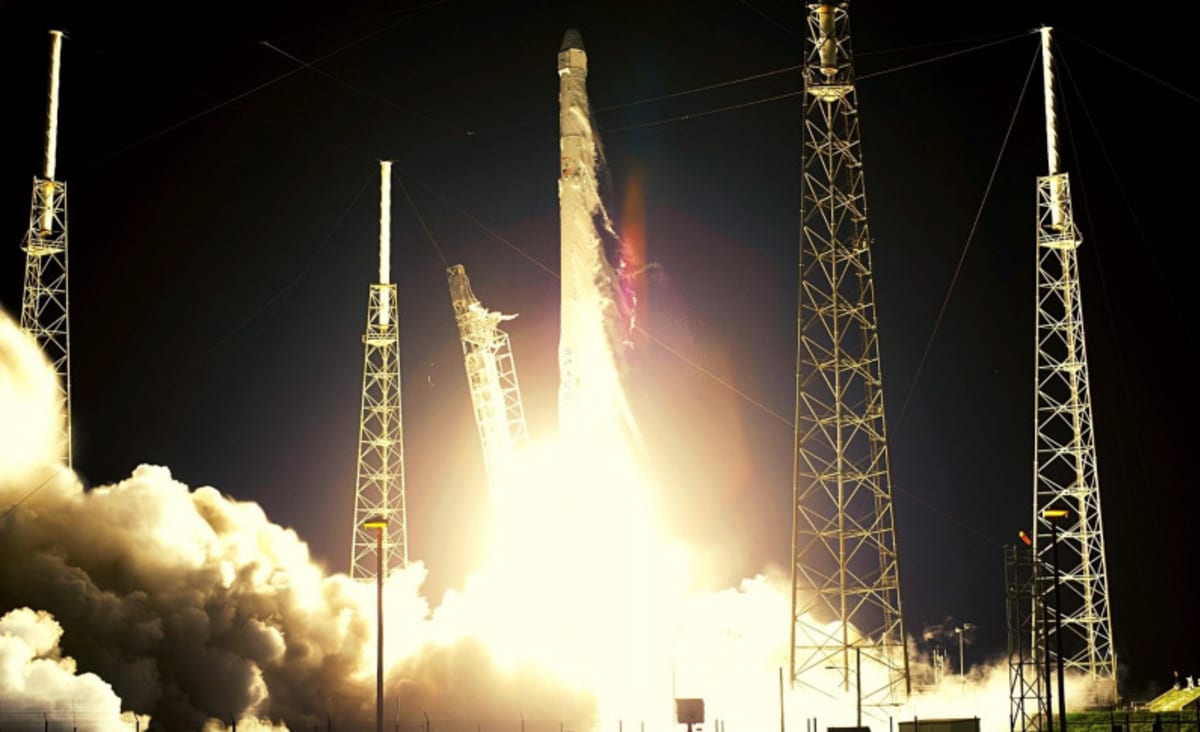
interestingengineering.com
SpaceX Finally Launched Its First Crew of Private Citizens to Space
SpaceX launched its first all-civilian mission in a Crew Dragon poised atop a Falcon 9 rocket! And it will ascend to 360 miles above the Earth.
Science & Tech
The world skipped to the next phase of the second space age as SpaceX launched four people aboard its Dragon Capsule atop its Falcon 9 rocket at 8:02 PM EDT, none of whom are astronauts, in SpaceX's first all-civilian space mission, according to a live stream of the event on the company's YouTube channel (featured below).
The mission, called Inspiration 4, saw four people who, again, were not NASA astronauts, blast to an altitude 360 miles (580 km) above the surface of Earth, which is even farther away than the International Space Station.
Strap in, because eventually, you could be selected for the adventure of a lifetime. Anything's possible.
SpaceX's Inspiration 4 crew 'on their way to space'
The Falcon 9 first stage rocket successfully detached from the second stage, which continued to propel the all-civilian crew into its orbital position roughly 360 miles above the surface of the planet. Twilight could be seen beyond the body of the first stage. Fist bumps were exchanged between crew members roughly seven minutes before the second stage separated from the Crew Dragon capsule.
The Falcon 9 first stage successfully landed on a SpaceX drone ship after descending through Earth's atmosphere, roughly 9 minutes and 30 seconds after launch. Nearly simultaneously, the MVAC second-stage rocket shut down, signaling the insertion of the all-civilian crew into nominal orbit. Second stage separation and nose cone opening were scheduled for the following minutes.
Four civilians rocket to space aboard SpaceX's Falcon 9
There were no early-stage problems, which means the mission served as a milestone for the nascent commercial space industry, which is primarily dominated by the billionaires Elon Musk and Jeff Bezos, whose companies have rushed to roll out space travel systems capable of lifting humans to space without relying on government programs and NASA astronauts. As an aside, this all-civilian launch also hopes to raise $200 million for St. Jude Children's Hospital and its efforts to advance cancer research.
Among the lucky four civilians on SpaceX's flight is Jared Isaacman, a trained pilot and founder of a payment processing company who will command the mission. He's also wealthy, which is why he purchased four seats on the Crew Dragon, and selected the three remaining passengers: Sian Proctor, a former NASA astronaut candidate and geology professor who won a video contest hosted by Shift4 (Isaacman's firm). Then there's Hayley Arceneaux, a St. Jude physician assistant and cancer survivor who was chosen through St. Jude. The fourth seat is filled by Data Engineer Christopher Sembroski of Lockheed Martin. While Sembroski's friend initially won the final golden ticket, that friend ultimately gave up his shot, and passed the ticket to Sembroski.
Inspiration 4 comes nearly one year after SpaceX's Crew Dragon capsule lifted a four-person crew of qualified astronauts to the International Space Station (and back to Earth). But, destined to ascend roughly 80 miles higher than the International Space Station, this mission will witness the Earth through two windows, in addition to a glass dome recently slapped on the top of the capsule (in place of the docking door used by the last capsule to link with the ISS). The crew of Inspiration 4 aims to return to Earth three days after launch, depending on Florida weather patterns, before splashing down in the Atlantic ocean. Once afloat in the deep blue waters, SpaceX recovery teams will probably link up with the capsule, lift it onto the ship, yank out the crew, and drive them back to shore, where a media tsunami will likely await.
























































